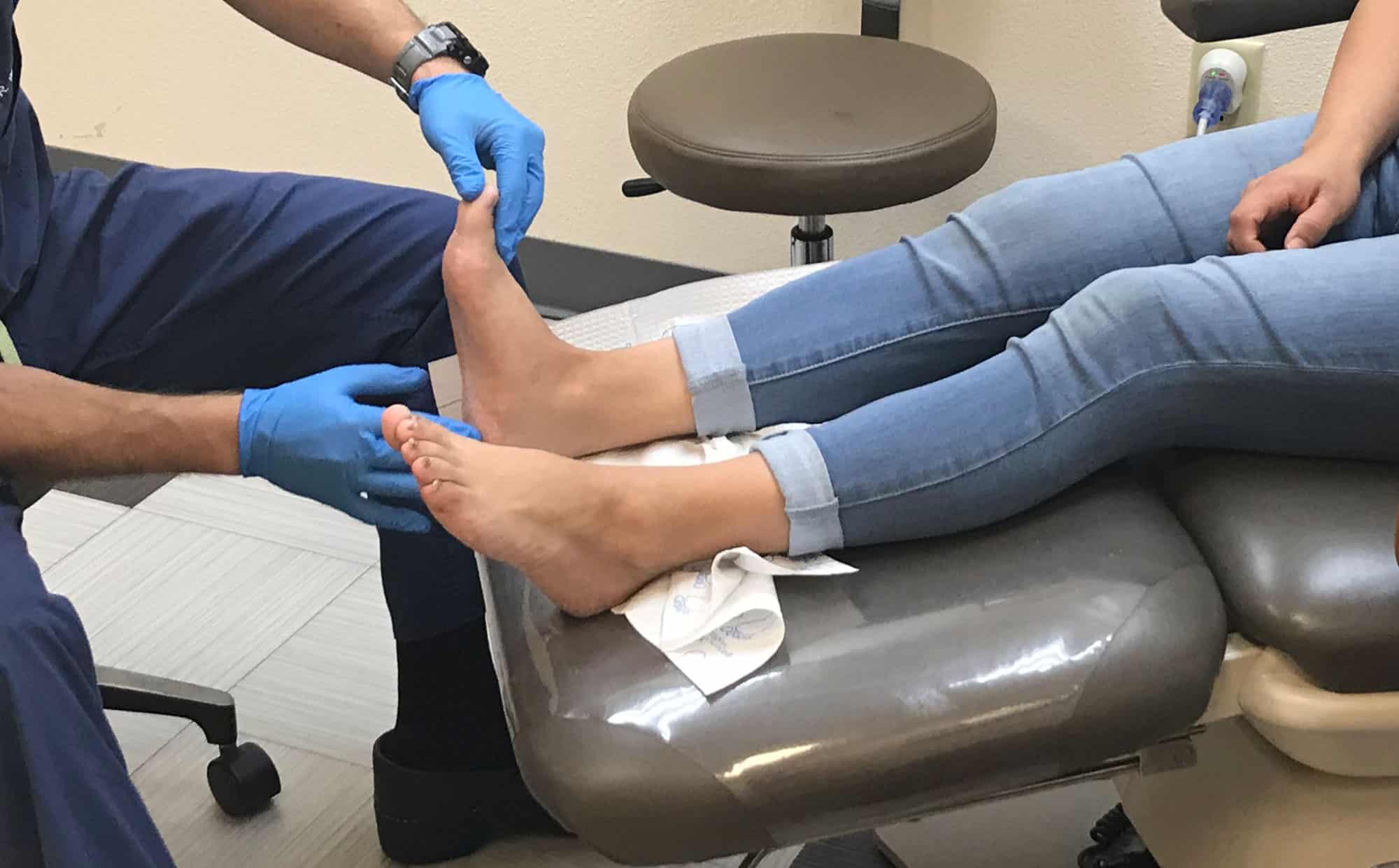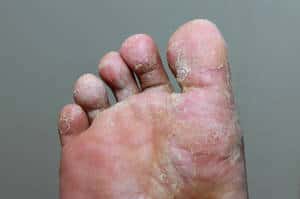Athletes Foot Cure – Treatment & Causes
Microscopic fungi cause athlete’s foot. It lives on the skin, hair and toenails and feeds off dead skin and moisture. Fungi of three types exist that cause athlete’s foot infections. The most common type is Trichophyton Rubrum and starts in the toe area.
Preferred Foot & Ankle Specialists
What is Athlete’s Foot?

Athlete’s foot is a highly contagious fungal infection that occurs between the toes or on the soles of the feet. Also known as tinea pedis, it is caused by microscopic fungi that feed off of dead skin and moisture on your feet’s skin, hair, and toenails. The most common type of athlete’s foot begins in the toe area and is called trichophyton rubrum.
Despite the name, anybody can get athlete’s foot.
You can schedule your appointment online anytime!
For Treatment and Athletes Foot Cure – Contact Dr. Mikkel Jarman, Podiatrist in Gilbert AZ, a suburb of Phoenix.
Call our office (480) 497-3946 if you have questions or want to schedule an appointment today.

What Causes Athlete’s Foot?
The fungi that cause athlete’s foot love warm, moist areas. That’s why socks, shoes, and public showers and locker rooms are common breeding grounds for the infection. You can help prevent the condition by wearing clean, dry socks and shoes that fit properly.
Also, avoid walking barefoot in public areas, such as the locker room or shower at your gym. Always wear sandals and disinfect them regularly.
What Are the Symptoms of Athlete’s Foot?
Symptoms vary according to the individual and type of infection. Typically, however, patients experience cracking or scaling on the skin of the feet. Other symptoms include blisters and an itching or burning sensation.
Athlete’s foot usually begins as a small rash between the toes but it may encompass the entire foot. Over time, the patient may develop blisters or the rash may begin oozing (or both).
How Do You Treat Athlete’s Foot?
Many patients can get rid of athlete’s foot with an over-the-counter antifungal cream, particularly if they begin treatment as soon as they notice symptoms. However, if the infection is severe, long-lasting, or does not respond to over-the-counter treatment, you should see a doctor. Advanced infections may require prescription medications. Or, the patient may have another type of infection not treatable with OTC creams.
You may also want to talk to your podiatrist for recurring cases of athlete’s foot. Dr. Weintrub can advise you about changes you can make to reduce your risk. To find out more, call us today at (480) 497-3946.

